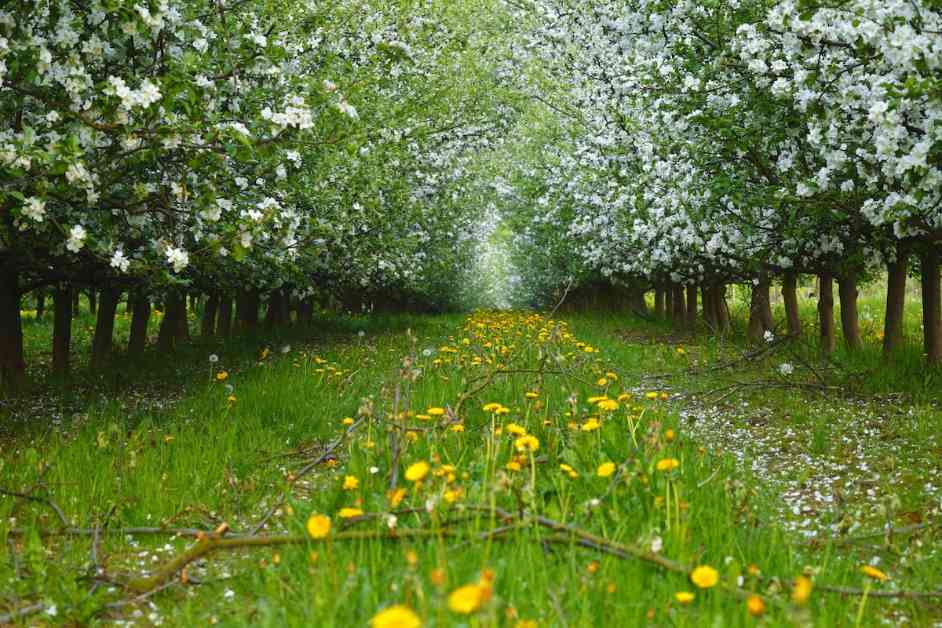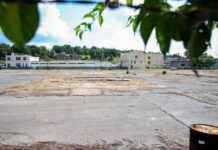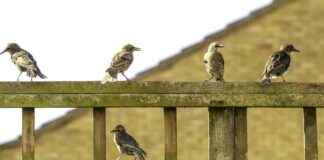An apple orchard in Saarland, Germany is blossoming with a row of wildflowers, creating a picturesque scene that not only adds beauty but also serves an important purpose. A recent study conducted in England suggests that planting strips of perennial wildflowers in apple orchards can help keep pests at bay in a cost-effective manner.
The study, led by Charlotte Howard from the University of Reading, explored the impact of planting wildflowers on apple orchards by attracting predatory insects like ladybirds, hoverflies, and lacewings. These insects play a crucial role in natural pest control by preying on common orchard pests such as the rosy apple aphid (Dysaphis plantaginea).
According to the findings, farmers could potentially save money while promoting biodiversity and allowing nature to take care of their crops. The study compared the costs of planting perennial wildflower strips in apple orchards with the economic cost of damage caused by aphids. The data revealed that planting wildflowers could lead to a 6.9% increase in the number of undamaged fruits in harvest compared to orchards without wildflowers.
By analyzing data from ten conventional apple orchards in southeastern England, the researchers found that orchards with flower strips performed better in terms of fruit quality compared to those without. The economic benefits of reducing damaged fruits from pests were quantified in different scenarios, highlighting potential cost savings for farmers.
The study presented three scenarios to evaluate costs and benefits of planting flower strips in apple orchards. In one scenario, where the flower strip was planted in the middle of the orchard during high pest infestation, farmers could save up to £2,997 per hectare. Even in low-infestation years, planting flowers in various locations could still result in cost benefits for farmers.
In addition to cost savings and improved fruit quality, planting wildflowers in orchards can attract more pollinators and enhance biodiversity. This symbiotic relationship between flowers, insects, and crops highlights the importance of sustainable farming practices that reduce reliance on chemicals.
Charlotte Howard emphasized the significance of caring for insects to protect apple crops, stating that planting flower margins near fruit trees is a sustainable approach to crop protection. By fostering a healthy ecosystem within orchards, farmers can produce better quality fruits while supporting local biodiversity.
The results of the study have led researchers to develop an educational guide for UK farmers interested in implementing similar practices in their orchards. The guide aims to help farmers understand the benefits of planting wildflowers and how it can positively impact their crops and the environment.
In conclusion, the study underscores the importance of incorporating natural solutions, such as planting perennial wildflowers, to mitigate pest damage in apple orchards. By embracing sustainable practices and working in harmony with nature, farmers can reap the benefits of increased crop yields, cost savings, and enhanced biodiversity. The beauty of an apple orchard in full bloom is not just a sight to behold, but a testament to the power of ecological balance in agriculture.














